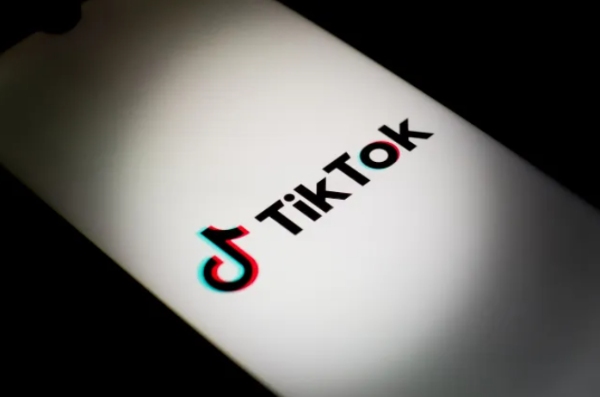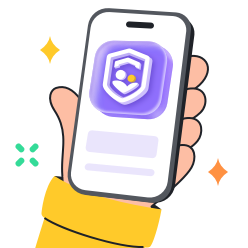In the fast-moving age, where social media reigns supreme, one app has captured the hearts of millions, especially the youth: TikTok. Why is TikTok so addictive? This canny trend has made people spend dozens of hours endlessly scrolling, raising a point of growing worries about mental wellness.
Let us embark on this mission to comprehend and take control of the luring attributes of TikTok so that people can find a healthy way to exist in the virtual world along with their families.
What is a TikTok addiction?
The problem of TikTok addiction is identified by the fact that it leads to some addictive behaviors that will, in the process, cause negative outcomes in various domains of life.
It basically encompasses the undying affection and the need to always check out and engage with such a platform no matter what else fights for attention and interests.
The excessive and abusive use of TikTok is, among other social issues, a potentially destructive effect on one’s social behavior, plus one’s physical well-being thanks to the poor lifestyles it promotes and lesser sleep.
Shaping an addiction to TikTok among young people provides a worrying trend, that it may seriously disrupt a usual routine, throwing their academic achievements into a frantic search for a next video, and finally interfering with their overall wellbeing.



Signs of TikTok addiction parents should be aware of
With the argument “Is TikTok dangerously addictive?” picking up steam, it becomes imperative for parents to look out for some of the tell-tale signs of their children spending too much time on TikTok.
Here are some signs that might indicate your child’s TikTok use has become dangerously addictive:
- Time warp: It’s hard to tell how fast time passes on the app. Be cautious of a significant growth in screen time spent solely on TikTok. Everything gets turned around, and sleep cycles are also affected by replacing bedtime with endlessly scrolling.
- Responsibilities on hold: Home tasks, including homework, cleaning, and cooking, fade out of attention. Their attention swings to that next viral video, and they forget all the tasks and duties.
- The grumpy scroller: Observe their irritability or short temper when their TikTok access is restricted. The absence of a regular dose of content can cause withdrawal symptoms like anxiety and frustration.
- Fake it ’til you make it: They are obsessed with displaying an idealized online identity which can result in social comparison and feelings of being inadequate.
- The real world fades: Interactions in person with friends and family decrease. They appear not to engage in real-life activities but seem to live in their TikTok world.
Guide to know hidden traps and parental controls to break free – for teens and parents.
Why is TikTok so addictive? Especially for teens
Often regarded as the most addictive app of all social media platforms, TikTok is more than just an app. It has evolved into a digital landscape that is impossible for teenagers to escape.
But why is it so addictive for users? Let’s dive into the psychological factors that keep teens glued to their screens:
- Community craving: Adolescents seek connection above anything else, and TikTok develops a tight-knit feeling of belonging. They come across communities based on shared passions, getting friends, and a feeling of “we vs. them”.
- Mirrored in the feed: TikTok flourishes on authenticity in contrast to other places featuring well-orchestrated perfection. Teens are likely to be inspired by the fact that their peers are producing exciting content and enjoy the feeling that they, too, can be stars.
- The like loop: The willingness to get more likes and comments starts a loop of validation. Each positive deflection triggers a dopamine rush that makes them want more of that positive reinforcement and leads them to create more content.
- Viral dreams: The possibility of going viral is always an undercurrent. Teenagers are biologically disposed to need validation and appreciation. What’s more, the chance to “go big and viral” on the internet is extremely attractive to them. This race to go viral makes them stick to it and keep creating more and more.
These various elements, together, result in a powerful psychological cocktail that makes TikTok one of the most addicting of the social media for the teens.
Addictive by design: How TikTok hooks you?



TikTok incorporates a few design techniques to capture user’s attention and make the app addictive. Let’s go through what are the addictive pull. Here are some key tactics:
- Infinite scroll and autoplay: TikTok includes an infinite scroll feature that allows users to swipe through a stream of videos without a stop sign. Such a content flow ensures that there are no breaks. People are, therefore, connected for extended durations of time.
- Personalized content: TikTok’s algorithm is renowned for being very good at learning user preferences and showing relevant content. By collecting data on watch time, likes and shares, the algorithm creates individualized feed users find more attractive, which, in turn, leads to the desire to see “just one more video”.
- Short-form videos: The short video format is one of the most important factors that makes TikTok addictive. These mini-videos are quick and easy to digest and require very little time investment, which encourages users to watch them one after the other without feeling overwhelmed.
- Near-win scenario: Developers set up the algorithm to create a “near-wins” flow – clips that perform well but not remarkably well. Therefore, this keeps them directly involved with the random expectation of obtaining virality and acquiring more likes.
How does TikTok affect mental health?
The endless stimulation of TikTok and the curated content may have psychological effects on teenagers whose brains are still growing.
- Dopamine addiction: The algorithm of TikTok works in such a way as to addict users by offering them a constant flow of new and encouraging content that causes the release of dopamine in the brain. This, in turn, results in addiction-like behaviors as the brain gets attracted to dopamine.
- TikTok brain: The continual scroll and impulsive content can cause concentration issues, leading to a shorter attention span. This explains what is the “TikTok brain”.
- Neglect of real-world connections: TikTok obsession often leads to people paying little or no attention to relationships and real-world matters as they are lost in the digital world.
- Sleep disruptions: The novelty of TikTok may induce extended watching until the late hours of the night, it may also disrupt sleep which leads to fatigue and even other health problems.
- Cyberbullying and exposure to inappropriate content: Although TikTok has developed content moderation policies, harmful challenges, and inappropriate content can stay accessible to the users, which in turn negatively influences the young generation’s mental health.
- Comparison and envy: The meticulously crafted and sometimes unrealistic images of people’s lives on TikTok may result in lower self-esteem, inadequacy and envy which finally lead to the negative self-perception.
How does TikTok influence behavior?
The issue of behavior change caused by TikTok, especially among its younger users, is increasingly receiving attention.
The app’s addictive design and immersive nature have the potential to shape behaviors in several ways:
- Normalization of risky behaviors
TikTok trends and challenges sometimes contain risky behaviors, such as stunts, pranks, or reckless actions that might cause injuries or trouble with the law. The pursuit of viral fame can trick users, especially young and naive ones, into risky behavior without a clear understanding of the possible outcomes.
- Shorter attention spans
Brief and short videos can decrease attention spans and the desire for instant gratification. Many people may find it difficult to concentrate on tasks that need consistent attention. This is because of these distractions, which may eventually harm their learning or productivity.
- Peer pressure and conformity
Trends on TikTok can bring about the pressures of following specific fashion and lifestyle. The audience can be drawn to engage in viral trends or even imitate content creators despite their questionable and harmful behaviors.
- Body image issues
On TikTok, youngsters might be victimized by exposure to fake images as well as unrealistic beauty ideals. The perpetual flow of false and altered content almost invariably results in the development of too-high expectations, self-esteem issues, or wrong values and aesthetic standards.
- Cyberbullying and online harassment
TikTok has restrictions intended to prevent cyberbullying and harassment, but it remains inescapable on the platform. The exposure of users to negative feedback and interactions may produce mental distress.
- Addiction and excessive use
Constant updating with new videos, and engaging its users at a very high rate, may lead to addictive watching and can’t balance other things like relationships, work, and exercise.
How to curb your kid’s TikTok addiction?
The answer to possible TikTok addiction is to be more proactive. Here are some practical tips to help your children achieve a healthier relationship with the app:
Fuel their passions: Guide your child in choosing fun and creative activities. In this way, introduce your child to their interests and joy and spend more time on meaningful things. It may be music, sports, or any charitable organization, all these give a very refreshing change to the virtual world.
Create tech-free zones & times: Have device-free areas, such as the dining table or bedrooms, where devices are not allowed. Encourage person-to-person contact by having “TikTok free” hours for homework or family game nights.
Embrace open communication: Talk to your child directly about the nature of their online explorations. Talk about the adverse effects of social media overuse, which also includes the consequences on one’s mental state and relationships.
Consider parental control apps: FlashGet Kids acts as your best assistant who is always ready to keep track of your kid’s . Via this app, you can track the app usage, set the limits of screen time, and also block apps like TikTok for a certain time as predefined.
It is through this partnership that your child will have controlled and manageable access to social media apps. Meanwhile, parents can ensure that he/she benefits from the digital environment at the right time.
The aim isn’t to condemn TikTok but to have a thinking pattern that will utilize technology in a balanced form. Where it is too much is not enough. Do not be drawn to it all the time.

